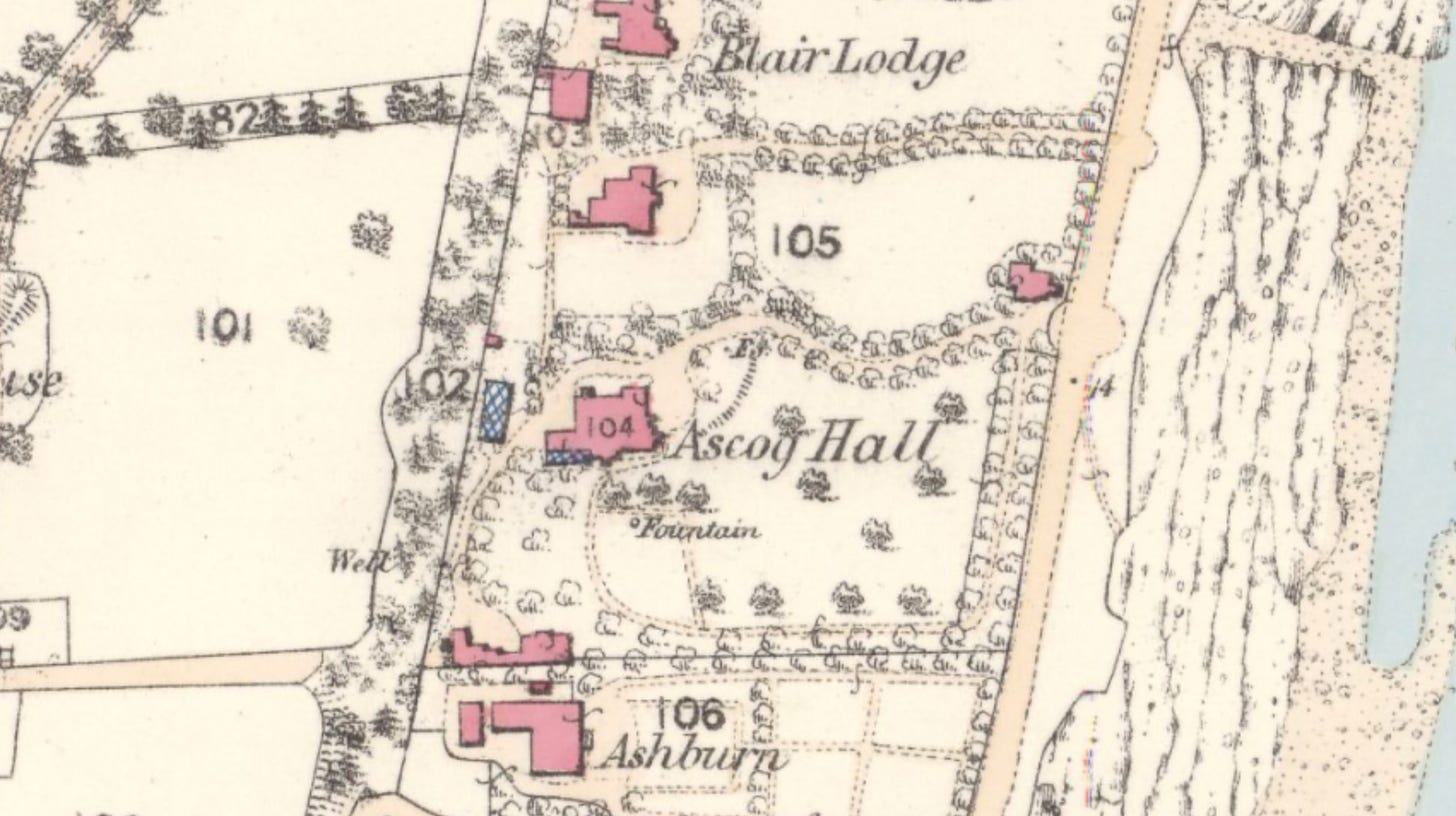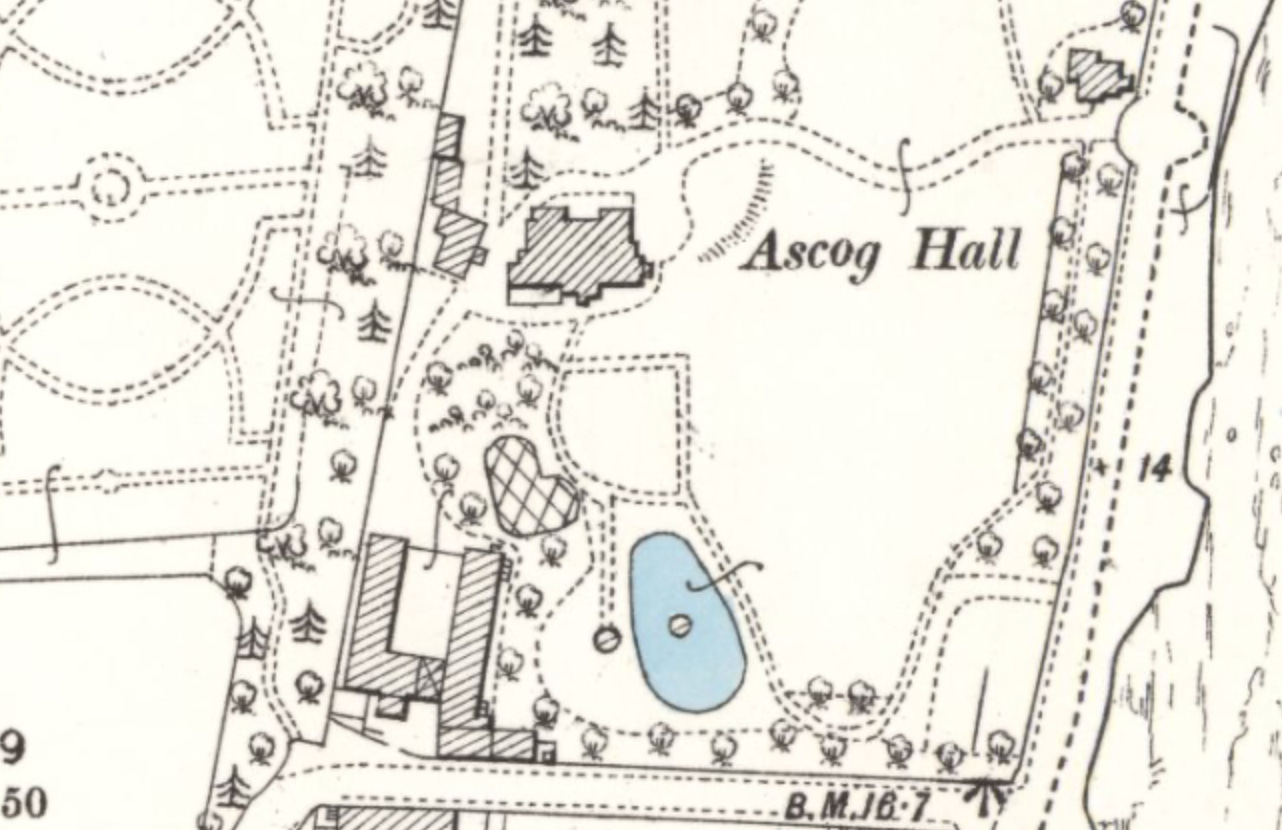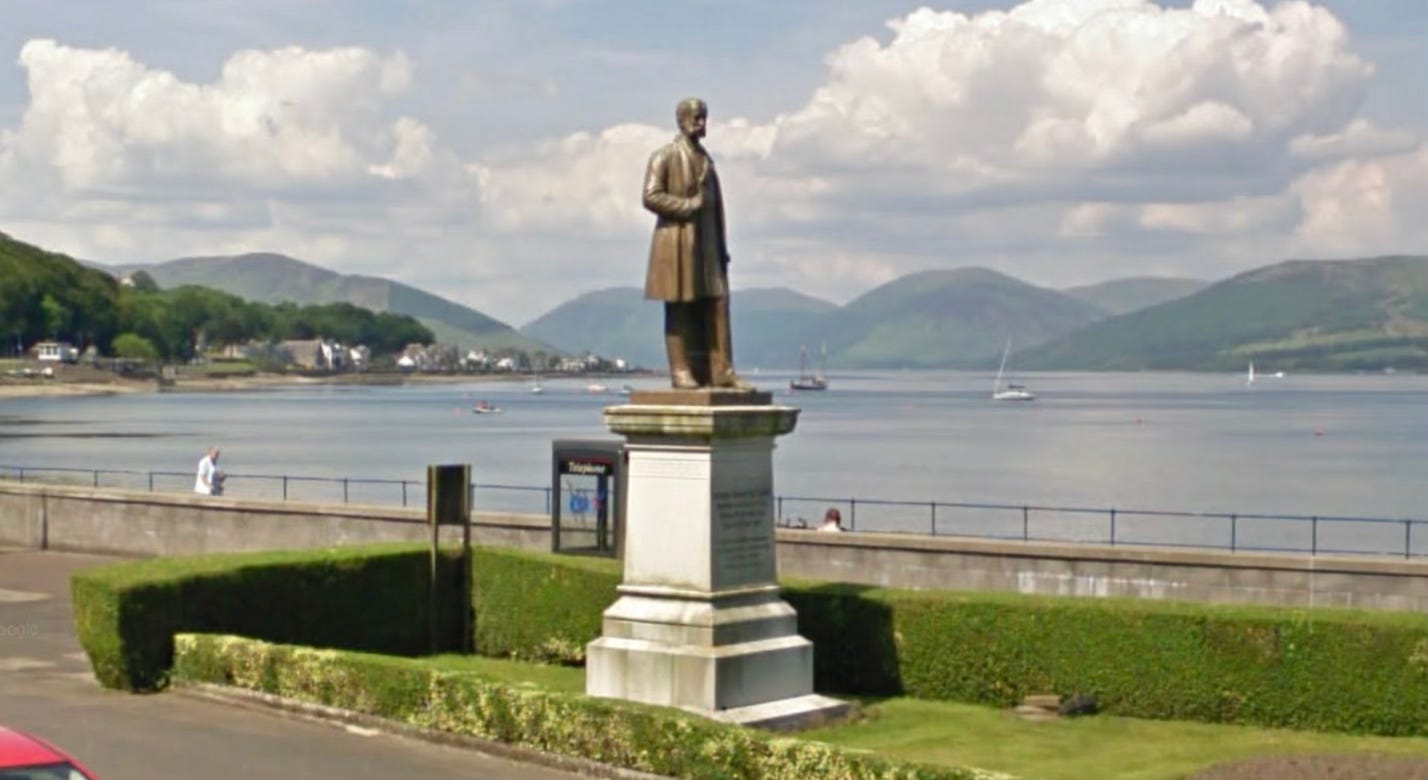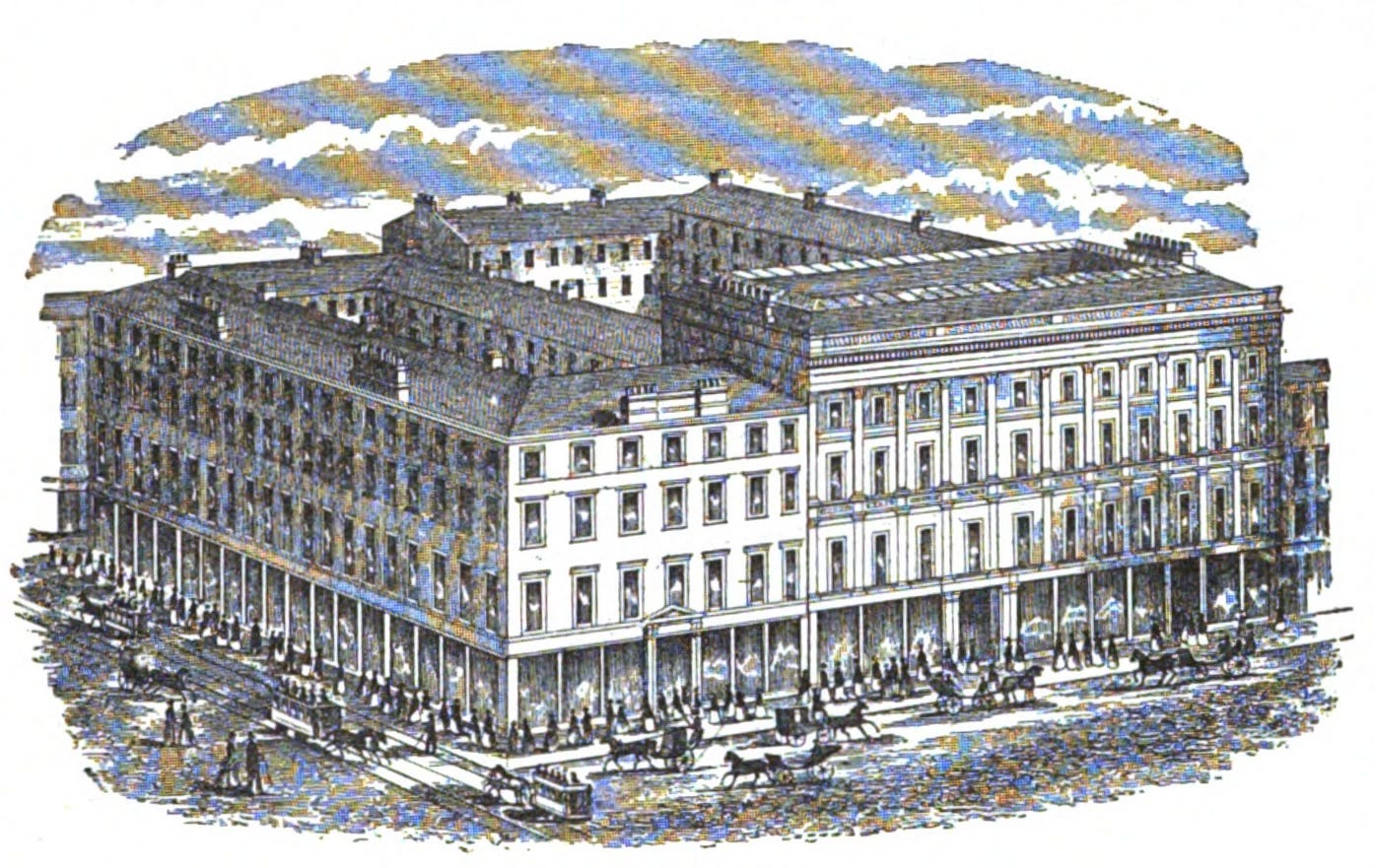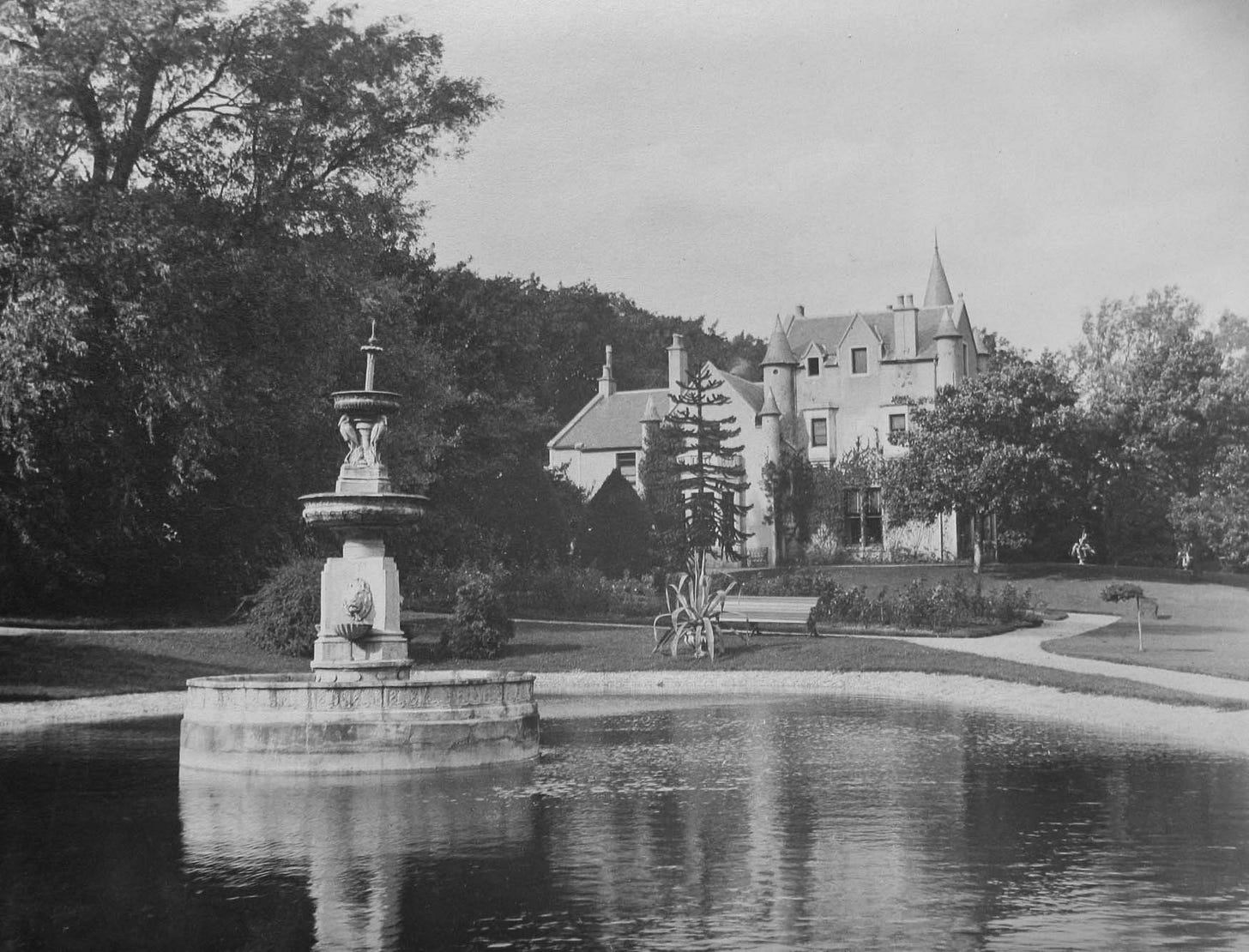
The 1843 Disruption saw many Established Church ministers displaced. For many congregations, the split had been foreseen for some time. In Dalkeith, Midlothian,
[a] meeting had been held in December 1842 to prepare for possible contingencies, so that, at the Disruption, there was an organised congregation to represent the Free Church in Dalkeith…. The congregation worshipped at first in the United Associate Secession Church, kindly granted for the purpose. The new church was built and opened in December 18431.
The senior minister at Dalkeith was the Rev. James Monteith. Born in Glasgow and originally a cotton spinner, he studied at Edinburgh University and had been ordained at Dalkeith a decade earlier. He resigned from the Church of Scotland in 1843 and, by September of that year, had become minister of Ascog Free Church, a small church designed by James Hamilton of Glasgow and erected in 1842-43 as a chapel-of-ease under Kingarth Parish Church. It is unclear why he felt the need to move parishes, perhaps to make way for the rector of Dalkeith Grammar School, who had to resign his appointment because he adhered to the Free Church, who took over parish work in Dalkeith for some time.
The Ascog church was simply designed and appears to have become the first permanent church building of the Free Church of Scotland in Scotland, with other congregations borrowing space in friendly churches, meeting in rented halls, or fundraising for their own new buildings. There would be no manse at Ascog for another ten years, but Monteith apparently had sufficient financial resources to have Ascog Hall constructed, perhaps as early as 1844, and possibly by Glasgow architect James Smith (1808-63)2. Monteith transferred to London in 1852 and died four years later, in 1856.
That year, Ascog Hall was sold to Robertson Buchanan Stewart, a member of a Rothesay family that had moved to Glasgow, where Robertson’s father (also Robertson Buchanan Stewart) was a coal agent. By 1826, however, the younger Stewart had partnered in Glasgow with John McDonald, a tailor from the Vale of Leven, opening a wholesale and retail drapery warehouse on the first floor of a tenement at 5 Buchanan Street. They were still there a decade later when another occupant, the architect John Baird, took on the young Alexander Thomson as an apprentice; by then, Stewart & McDonald ‘were supplying retailers from Glasgow and surrounding districts with drapery of every description’3.
In 1862, six years after purchasing Ascog Hall, Stewart commissioned additions to the house from John Honeyman at a cost of £324, resulting in an interior arranged over three floors, with entry through a circular turret, a dual aspect drawing room, other public rooms, and five bedrooms on the two upper levels. Bannatyne had married in January 1862; a son, the first of eight children, was born in July that year.
The grounds are likely also to have been developed. The 1863 Ordnance Survey shows a fountain in place, presumably the one shown in the image above. If so, this was Baird & Thomson’s terracotta fountain that was first on display in the 1853 Dublin Exhibition of Art-Industry, and subsequently constructed in various forms in Ireland, Australia and New Zealand4.
In the 1870s, Robertson Buchanan Stewart commissioned Edward La Trobe Bateman (1816-97) to lay out the gardens. He probably created the 1875 sunken fernery, with its glass roof and fed by natural spring water. He may also have removed the fountain. The undated image below, probably after its removal, shows the fountain outside what is thought to be a wheelwright’s shop at the corner of the corner of High Street and Russell Street. What became of it is unknown.
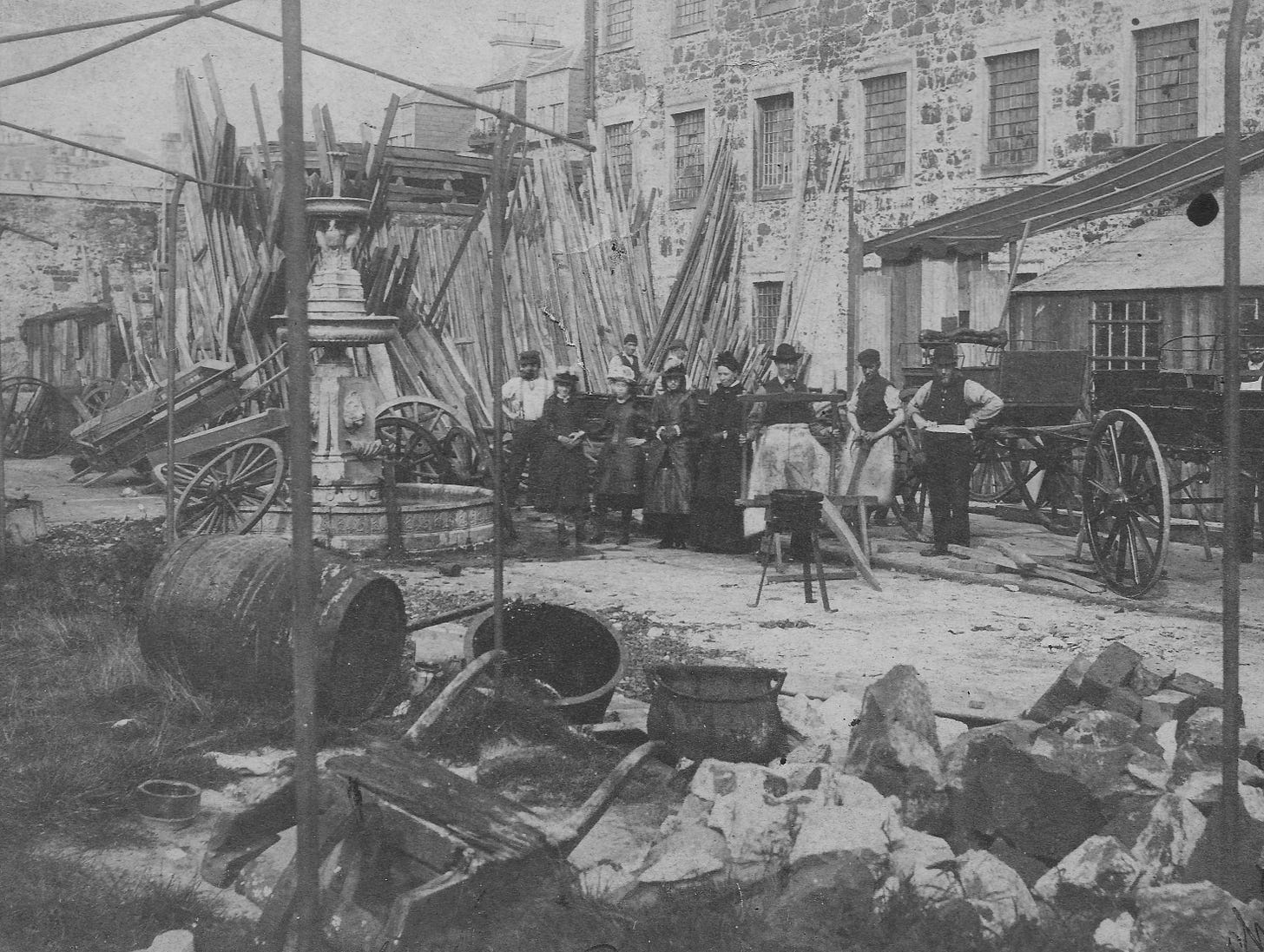
If Bateman did not remove the fountain, it had certainly gone by 1896, when the Ordnance Survey map below was surveyed.
The beneficent Stewarts
Robertson Buchanan Stewart senior (1793-1871) was born in Bute. Family history states that he served as a Royal Marine (a history of the House of Fraser states that he was invalided out5), but by 1819, he was in Glasgow, where he married Martha Stewart, a first cousin. They had one known son (two, according to family records) and six daughters, but one of the sons and none of the daughters survived infancy. The surviving son, Robert Buchanan Stewart (1829-1900), married the daughter of a Rothesay doctor but seems to have lived wholly in Partick and Hillhead. He was co-founder and partner of Stewart, Wilson & Brodie, power-loom cloth manufacturers and merchants of St Vincent Street, and at least one of his sons followed him into the business. He became a JP, with five sons and seven daughters from his marriage.
Martha Stewart died in 1831, and Robertson senior married the following year to Helen (‘Ellie’) Ballantine, who bore him three sons: Ninian Bannatyne Stewart (1833-1912), Robertson Buchanan Stewart (1834- ) and Alexander Bannatyne Stewart (1836-1880).
By 1847, the company had acquired premises at 152 Argyle Street and 4 Mitchell Street. Ninian joined the business in 1859, as did Alistair McDonald, son of the co-founder John McDonald, who died the following year. One of the partnership’s staff was Hugh Fraser, who had joined in the 1840s as a lace buyer and became warehouse manager before leaving in 1849 to go into partnership on is own account as Arthur & Fraser, drapers, of Glasgow.
Ninian was followed by his brother Alexander three years later, but it is Ninian is identified as the person who did much to expand the business before his retirement in 1874.
Robertson Buchanan Stewart was widely recognised as one of Bute’s chief benefactors. He contributed money to provide coal to the poor in winter, supported scholarships for students of the Free Church, and, after his death in 1871, left an endowment for the minister of Ascog Free Church. When a new hospital for the island was proposed, he contributed £1,000 to the building fund. After his death, with construction estimated at £1,475 more than the funds available, his surviving sons agreed to finance the balance, with the building named the ‘Robertson Stewart Hospital’5.
Alexander in particular continued his family’s charitable efforts, offering prizes to local competitions, supporting the creation of public amenities, and funds for local churchmen to pay for needy patients at the hospital. Living at Rawcliffe Lodge, Langside, he amassed a large collection of fine art, became president of the Glasgow and West of Scotland Horticultural Association, being recognised ‘As a floriculturist… the most successful amateur in the kingdom’6. He was also appointed Convener of the county of Bute and a deputy lieutenant. after his death, an 1884 bronze statue by John Mossman (below) was erected in Rothesay on the Esplanade, whose development he had also supported.
Stewart & McDonald, warehousemen
The company’s history on the House of Fraser website states
In 1866, an Italian style retail warehouse was erected north of the 7original site at 21 Buchanan Street. In the late 1860s, the company also acquired a block on the west side of Mitchell Street where a shirt manufactory was established. Later, a packing area was installed in Union Street, connected to the main building by a subway.
The 1866 warehouse must have replaced the three-building terrace (below), and by 1871, the business had expanded to cover Nos. 1-31 Buchanan Street and Nos. 136-156 Argyle Street. It is possible that the 1866 building kept the original building line, reflecting the original street layout: the corner site was the first part of Buchanan Street to be built on, back in 1765 when Virginia merchant Andrew Buchanan, who gave his name to the street, built his house there. That house had been demolished in 1820 and replaced by the tenement later occupied by Stuart & McDonald and John Baird I. The change in building lines due to later construction is evident in Peter Fleming’s 1807 map of Glasgow.
The two buildings fronting Arygle Street and running west to Mitchell Street formed part of Gordon’s Land, owned by John and Alexander Gordon, both listed as Glasgow merchants in Jones’s 1787 Directory (Alexander Gordon built a mansion for himself at the corner of Buchanan Street with what became Gordon Street, named after him).
In 1879, William Spence replaced the 1866 warehouse with a purpose-built warehouse at 21-31 Buchanan Street, ‘a classical four-storey front divided by Corinthian pilasters, and an almost unaltered shopfront with thin cast-iron shafts’8.

Since Spence’s building remains, and agrees with the building line to the north, the buildings at the corner of Buchanan Street and Argyle Streets round to Mitchell Street shown above must also have been replaced after 1856, since the Argyle Street frontage shown in 1891 below is straight, unlike the angled neighbouring building above, and the central courtyard parallel to Argyle Street is inconsistent with the 1856 layout9. It is possible, however, that the illustration gets it wrong and that the 1886 building did obtrude further forward. The House of Fraser history notes
In 1898 plans had been laid for the rebuilding of the southern portion of the warehouse fronting Argyle Street and the corner of Buchanan Street, and compensation of £8,000 was awarded to Stewart & McDonald by the Council for setting back the frontage in line with the rest of Buchanan Street.10’
By 1889, Stewart & McDonald encompassed 33 wholesale drapery departments and a thriving retail business, specialising in dress materials and ready-made clothes, with 500 staff in the warehouse and about 70 commercial travellers. Two years later, it had outlets or factories including Edinburgh, Leeds, Newcastle and Preston, Belfast, Dublin, Australia, Canada and South Africa. In 1892, the sales area in Buchanan Street was extended by excavating a lower ground floor.
By the turn of the 20th century, even the post-1856 Mitchell Street-Argyle Street-Buchanan Street block was insufficient, and Horatio Bromhead designed a replacement featuring a pair of heavily-laden atlantes by William Vickers (at one time they were referred to locally as ‘Stuart and McDonald’) in a building described as having ‘one of the most extensive frontages of any commercial building in Glasgow’. Public Sculpture of Glasgow describes the atlantes (shown below) as
an appropriately monumental introduction to a building estimated at the time to be ‘the largest warehouse of its kind in Britain’
comparing them to William Mossman’s figures for St Andrew’s Hall of a quarter century before11.

After Ninian Stewart’s retirement in 1874, Alexander became senior partner. However, he died suddenly at the Midland Hotel at St Pancras in London in 1880, aged 43. His place was taken by a grandson, John R Stewart.
In 1913, the retail section of the company was hived off from the larger wholesale business as a separate private limited liability company, McDonald’s Ltd. In 1922, because of significant losses, the wholesale company, Stewart & McDonald Ltd, amalgamated with another Glasgow company, J & W Campbell12. In 1951, the retail company, McDonald’s Ltd, was acquired as a subsidiary of House of Fraser Ltd; in 1966, it was merged with Wylie & Lochhead Ltd, which had been acquired by House of Fraser Ltd in 1957, with the stores trading as McDonald’s, Wylie & Lochhead until 1975, when they were amalgamated into what is now Fraser’s department store.
W Ewing, Annals of the Free Church of Scotland, 1843-1900, Vol.2, Edinburgh, 1914
According to https://www.scottish-places.info/features/featurefirst9948.html
https://www.housefraserarchive.ac.uk/company/?id=c2570, from which much of the corporate detail is taken
Image identified by Scott Abercombie. See the article on Thomson’s ‘Great Fountain’
The Scotsman, 25 Jul 1872
Greenock Advertiser, 28 May 1880
From D Frazer, The Story of the Making of Buchanan Street, Glasgow, 1885
E Williamson, A Riches, M Higgs, Buildings of Scotland: Glasgow, London, 1990
Glasgow and its Environs, London, 1891
M Moss, A Turton, op. cit.
R McKenzie, Public Sculpture of Glasgow, Liverpool, 2002
J. & W. Campbell & Co. began business in 1817 and were the first in Glasgow to occupy the upper flats of a tenement as a retail soft goods warehouse. Stewart & McDonald’s partnership sought to emulate their success.




